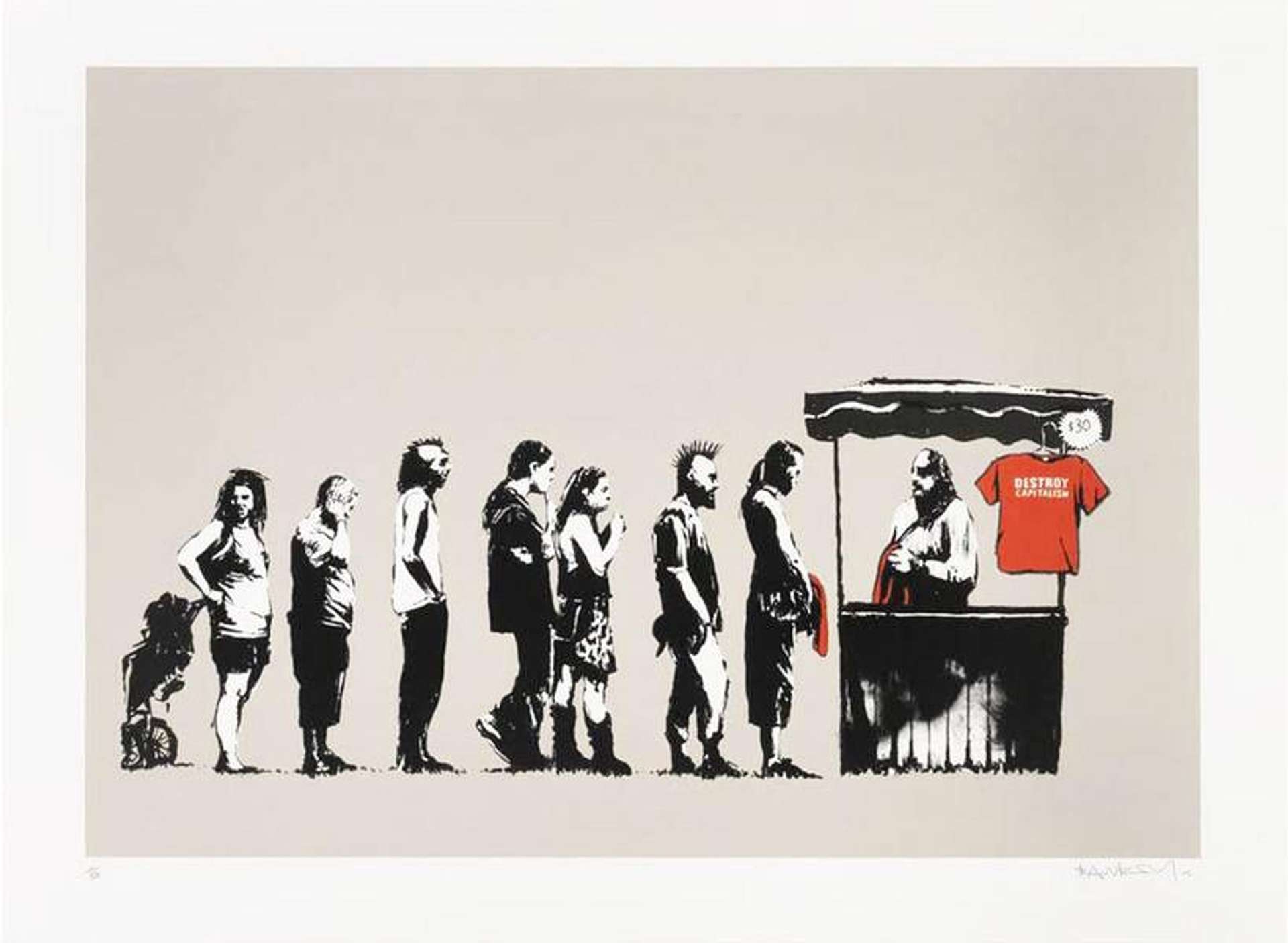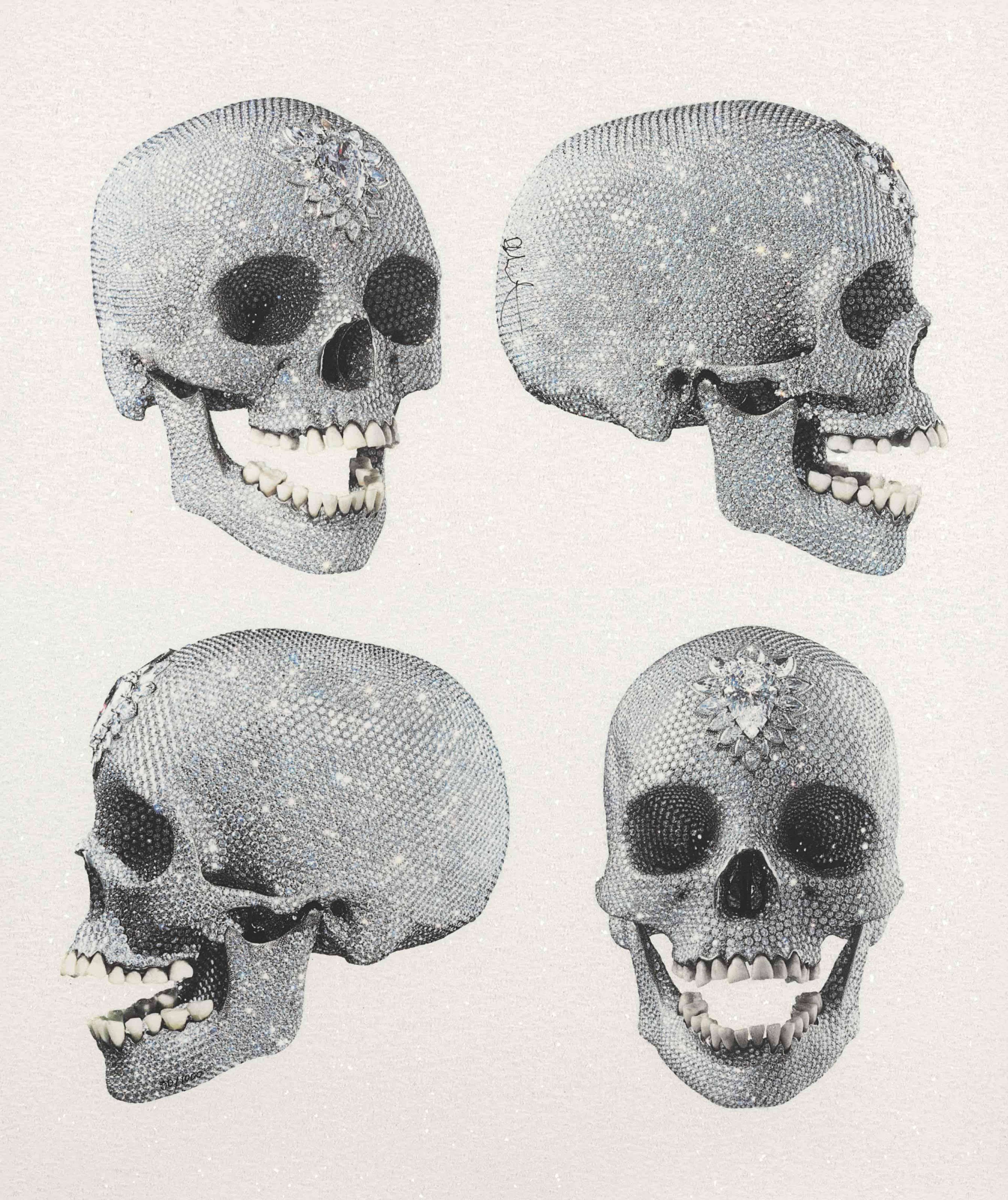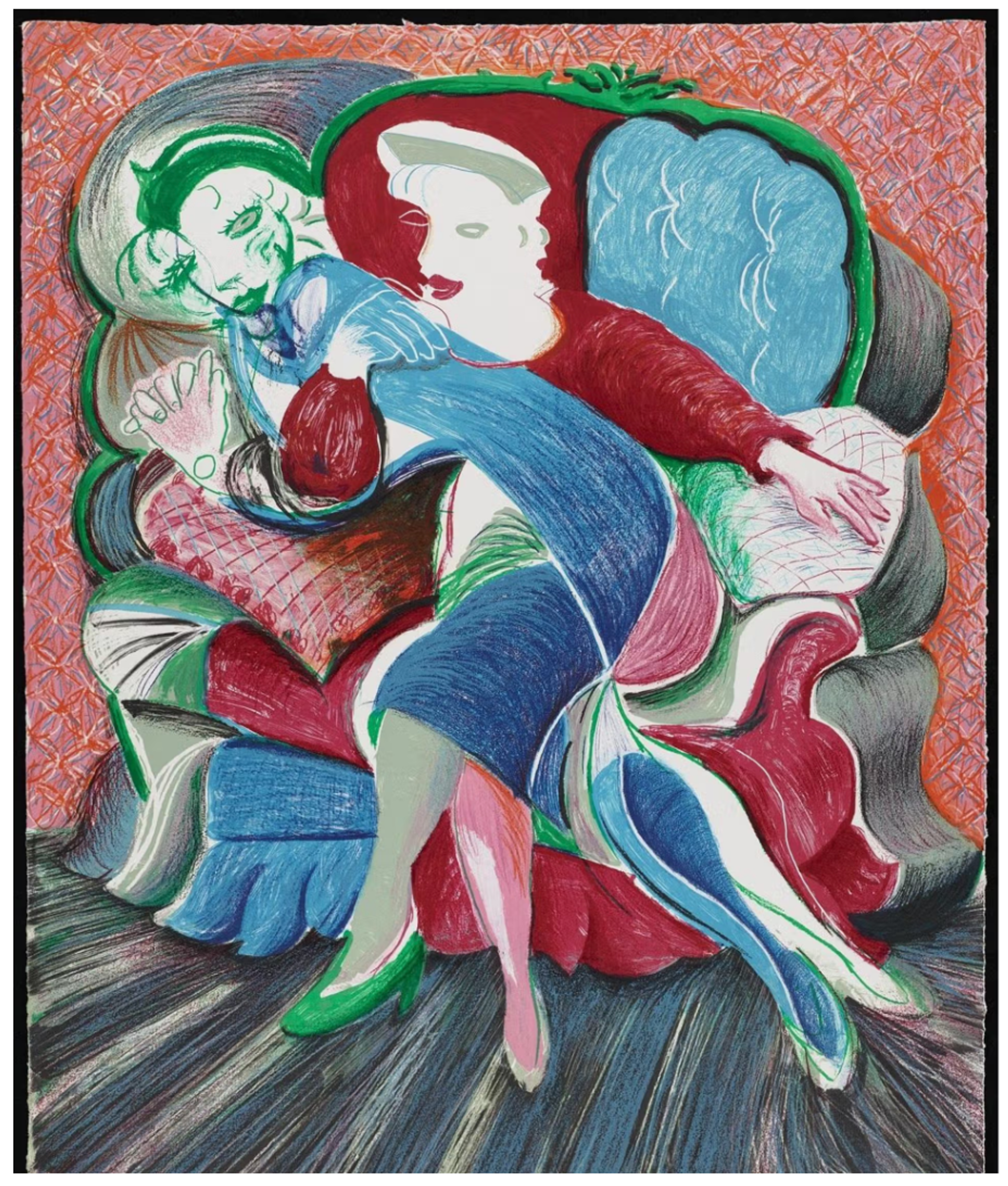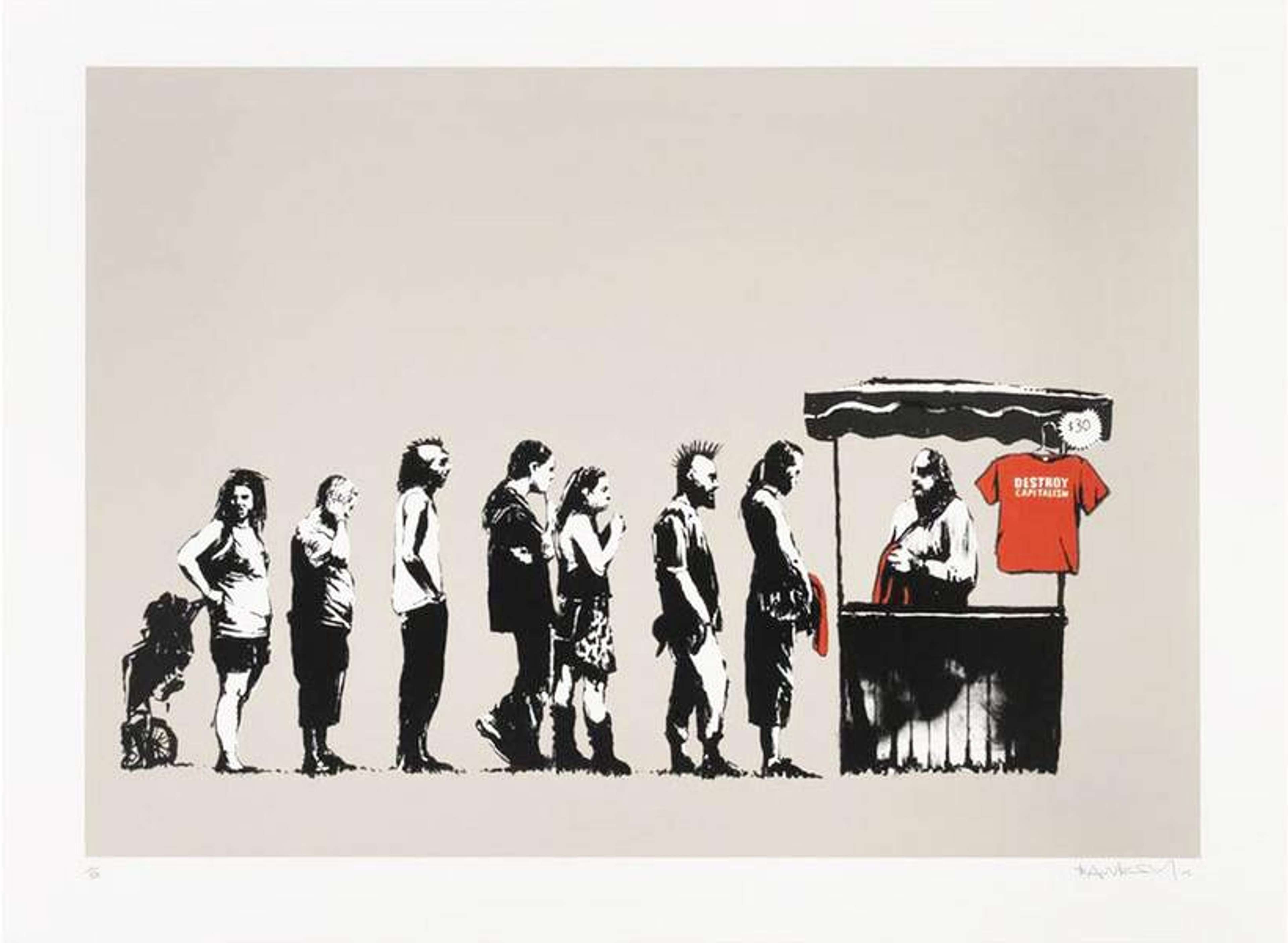The Rise of Art Fraud: Exploring Recent Scandals in the Art World

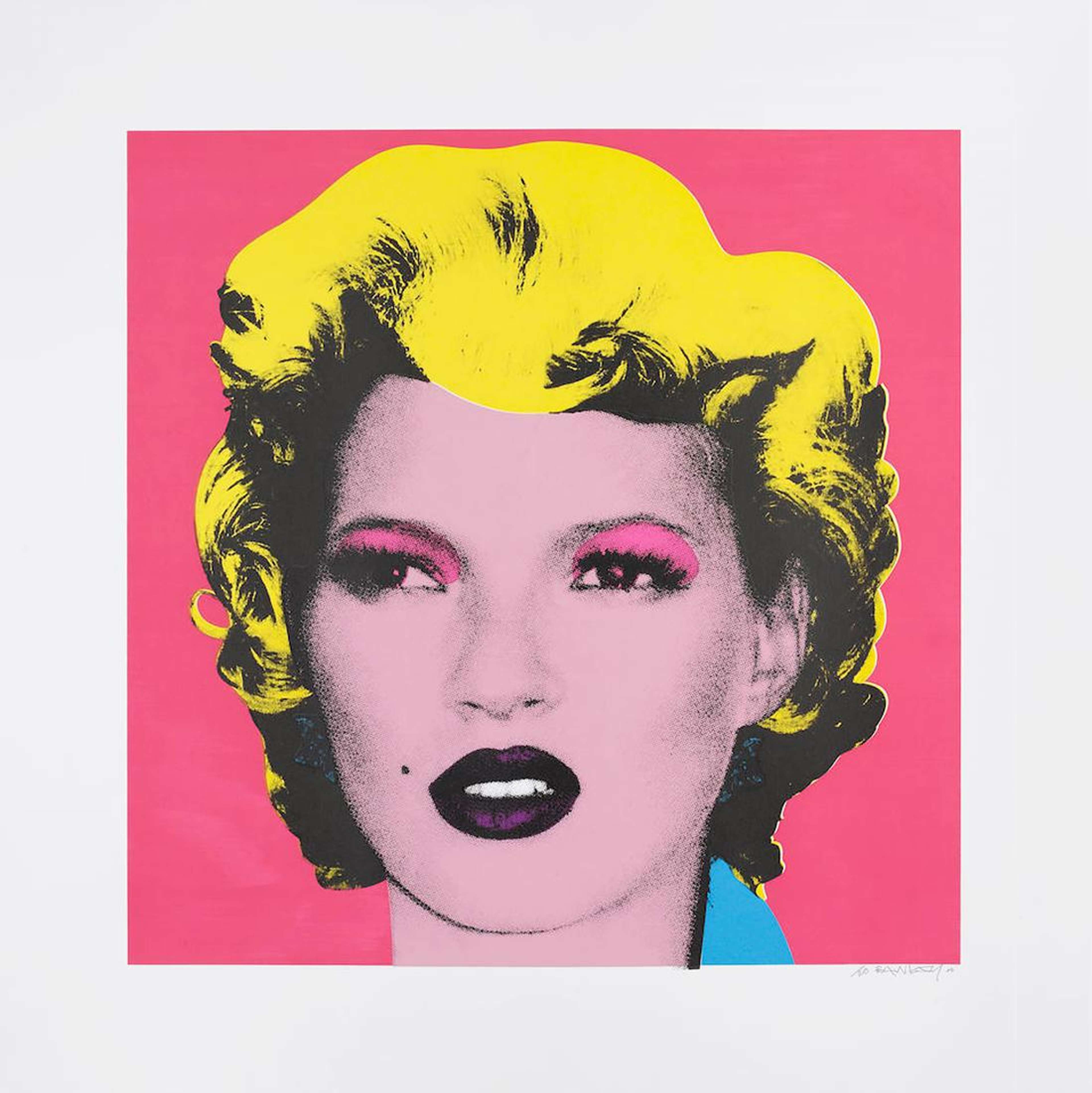 Kate Moss (dark pink) © Banksy 2005
Kate Moss (dark pink) © Banksy 2005Market Reports
In an era marked by widespread misinformation, art fraud has become increasingly prevalent. Richard Polsky uncovers the latest scandals shaking the art world, from Damien Hirst’s backdated shark sculptures to Kim Kardashian’s unauthorised copies of Donald Judd’s designs. These incidents not only question the integrity of the artists involved, but also reflect the broader societal issues of our time.
The Case of Damien Hirst’s Backdated Sculptures
Damien Hirst is allegedly the richest living artist in England. You assume this is due to a combination of innovative work and shrewd marketing. But perhaps something more is afoot. It recently came to the art world’s attention that a group of three classic “shark in formaldehyde” works shown at Gagosian, in Hong Kong (in 2017), had been backdated. These pieces were allegedly executed during the 1990s - which would have been the sweet spot for this body of work. Instead, the word leaked out that they were all created in 2017 - rendering them far less valuable.
Historical Precedents: Sam Francis & Mel Ramos
There is an art market precedence for artists “monkeying around” with the dating of their work. Two examples which come to mind are Sam Francis and Mel Ramos. In 1987, a Los Angeles gallery inaugurated their new space with a show of paintings by Sam Francis. Having viewed the show myself, I can confirm that it was both attractive and well-received. However, it later came out that some of the paintings from his Blue Balls series (among others) were dated from the mid-1960s - but they had been recently executed by Francis.
The upshot of this revelation proved complicated. When one of these paintings turned up in a Sotheby’s catalog, the auction house went with the vintage dating. But as the controversy grew, the auction house began to assign a much broader range (circa 1960s-1980s). No one questioned the authenticity of the pictures and the fact that they were painted by Sam Francis. Rather, it was about financial considerations. A vintage painting by a major artist is worth far more than a recent example from the same body of work.
Just like Sam Francis, no one is questioning that Damien Hirst fabricated these three “shark sculptures.” But by backdating them he intentionally sought to boost their value. There are also concerns about what the gallery knew or whether they too had been kept in the dark. When Hirst was caught in the act, his corporate entity, Science Ltd., quickly tried to spin it. They issued a statement claiming his “Formaldehyde works are conceptual art works…” They concluded that since Hirst “conceived” the pieces during the 1990s, he had every right to date them from this period. But it was all a bunch of malarkey aimed at damage control.
At least when the Pop artist Mel Ramos released a fresh body of work, titled The Lost Paintings Of 1965, he admitted that the paintings were brand new - and were based on his sketches from 1965 (but never executed as paintings then). In this case, Mel let the buyer decide whether there was value added from the “conceptual dating” of the work - even though they were still priced as recent paintings.
What happened with Damien Hirst probably won’t affect his overall market. But it does call into question his integrity as an artist. You wonder why, given his alleged vast wealth, he felt the need to misdate these works and risk his artistic reputation. Hirst’s ploy also reflects the world we currently live in, which has become a maelstrom of lying, denial, and misinformation. Perhaps there is some truth to the saying that art reflects its times.
The Kim Kardashian & Donald Judd Controversy
Not long after the Damien Hirst revelation, the press reported that Kim Kardashian was producing cheap knockoffs of Donald Judd’s furniture designs - without obtaining permission from the Judd estate.
The whole thing came to light during a Kim Kardashian promotional video. At one point, the camera panned to a pair of tables which Kardashian specifically referred to as “Donald Judd tables.” It turned out the furniture was fabricated by a company called Clements Design. When Judd’s children (who run his foundation) got wind of it, their attorney approached Kardashian and demanded that she take the tables off the market, withdraw the video, and issue an apology. Kardashian’s people claimed they tried to work something out with Judd’s attorneys. But the Judd Foundation was having none of it - and decided to sue.
As someone familiar with Judd’s furniture, which can be seen at his compound in Marfa, Texas, I can confirm the quality of these pieces and the exacting standards employed by the artist. During his lifetime, Judd made sure his furniture was fabricated with the same care as his sculpture. Regardless, the point to this story is you really wonder how Kardashian thought she’d get away with it. But as previously mentioned, perhaps it’s just a sign of the times.
Inigo Philbrick: A Modern Art World Scammer
Art world scandals used to be big news. Now they’re par for the course. Recently, Vanity Fair ran a major feature on Inigo Philbrick, who was just released from prison, for ripping off various people in the art world to the tune of $86 million. Predictably, there’s going to be a book about Philbrick’s caper titled, All That Glitters by Orlando Whitfield. Also, the BBC is producing a documentary series called, “The Real Story of Inigo Philbrick.” In theory, if Mr. Philbrick earns any money from these ventures it will have to go toward paying restitution to the victims — but I wouldn’t count on it. After all, this is the same guy who told Vanity Fair that now he’s out of prison, “I’d like to get reestablished as an art dealer.”
Richard Polsky is the owner of Richard Polsky Art Authentication and Richard Polsky Art Fraud Prevention which specialise in authenticating the work of seven artists including: Andy Warhol, Jean-Michel Basquiat, Keith Haring, and Roy Lichtenstein.







